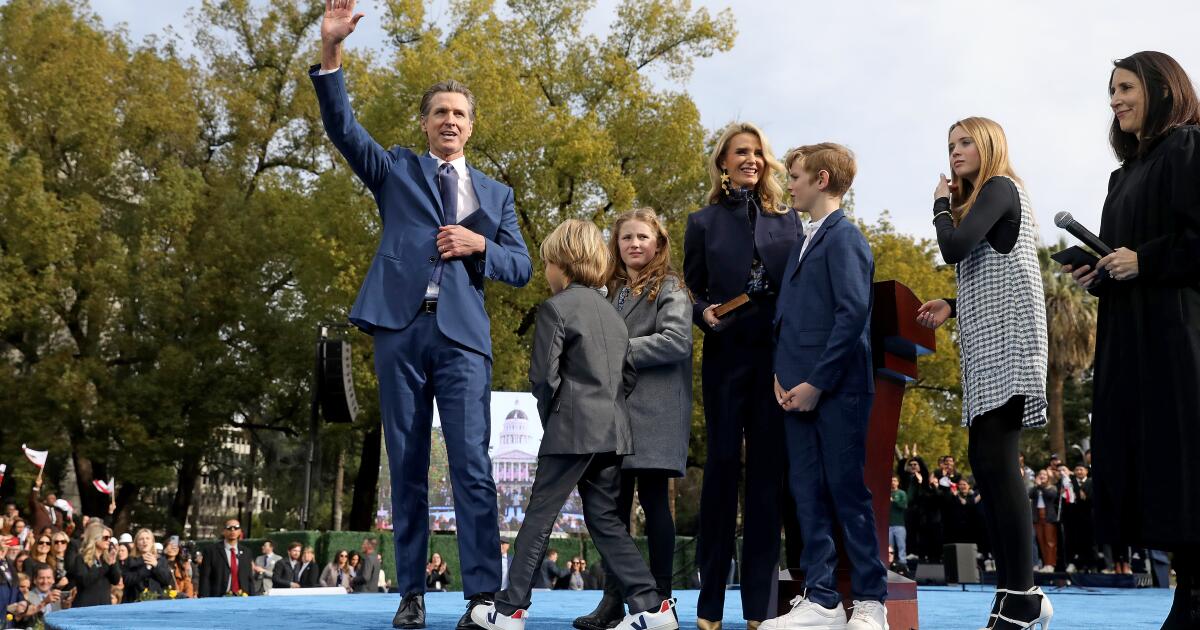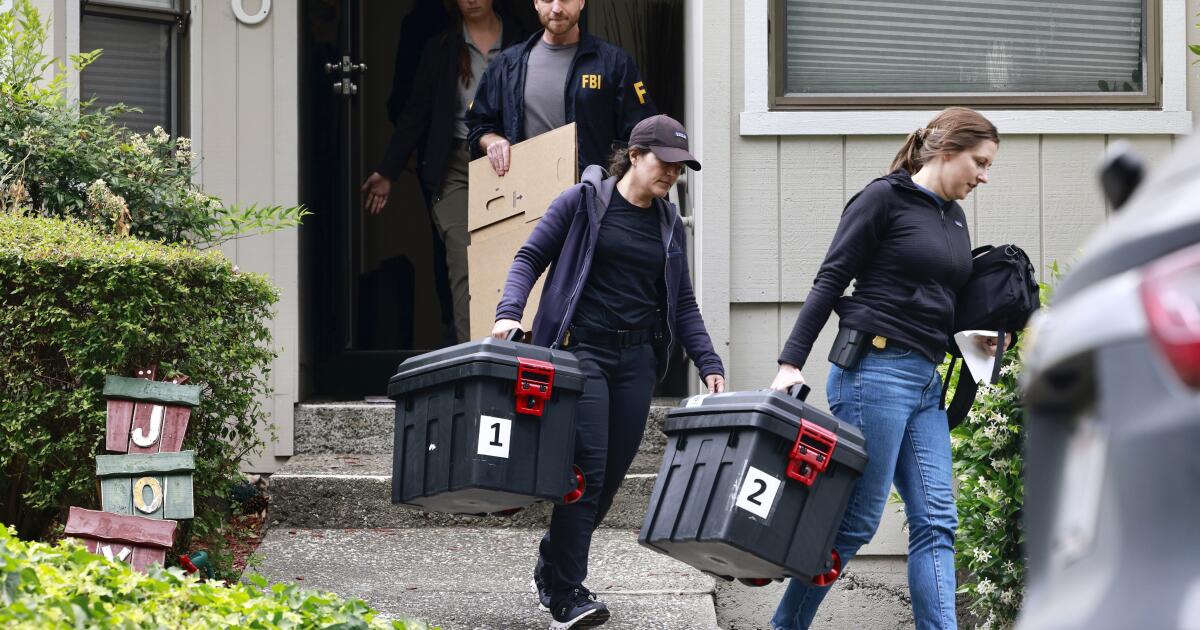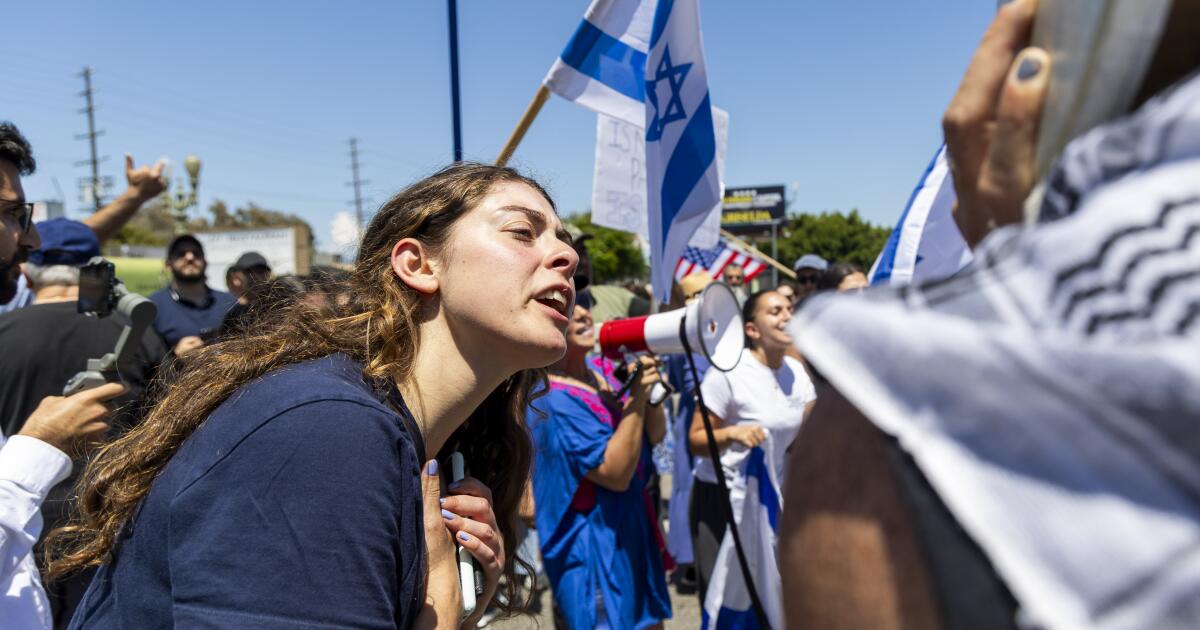World News
A push to rename Pershing Square for Biddy Mason, unsung L.A. hero

It was nearly a year ago when Los Angeles City Councilmember Kevin de León broke ground on a multimillion-dollar renovation of Pershing Square in downtown L.A.
The ceremony marked the first of three construction phases that will transform the concrete space into a more accessible and attractive public square by demolishing walls, lowering the park to street level and adding more greenery. Phase One is expected to cost about $21 million.
But the five-acre park, nestled between Olive and Hill streets, will not only get a new look but possibly a new name.
De León is set to announce a plan to introduce a City Council motion on Friday to rename Pershing Square after Biddy Mason, who was born into slavery, won her freedom in court and became a philanthropist and unsung hero of Los Angeles. She also founded the city’s First AME Church, one of the largest Black churches in the U.S.
The park is currently named after military hero John J. Pershing, who commanded the U.S. armed forces during World War I.
De León also plans to submit a separate motion to add a ceremonial street sign on Spring Street, between 1st and 5th streets, as a way to honor Mason as well.
The section of the street runs along the Broadway Spring Center, a parking garage and shopping arcade that sits where Mason, in 1866, bought land for $250. It’s also the site of the Biddy Mason Memorial Park. The tiny, secluded park features a concrete wall that charts Mason’s life and includes impressions of a wagon wheel, a fence and a medicine bag — nodding to her time as nurse and midwife before she walked from Mississippi to California behind a wagon. The park also shows plaques of survey maps, one of Mason’s property deeds and her portrait.
Cheryl and Robynn Cox, sisters and fourth-great-granddaughters of Mason, said they’re grateful that the councilman is pushing for recognition of the woman whose contributions to Los Angeles went virtually unnoticed for more than a century.
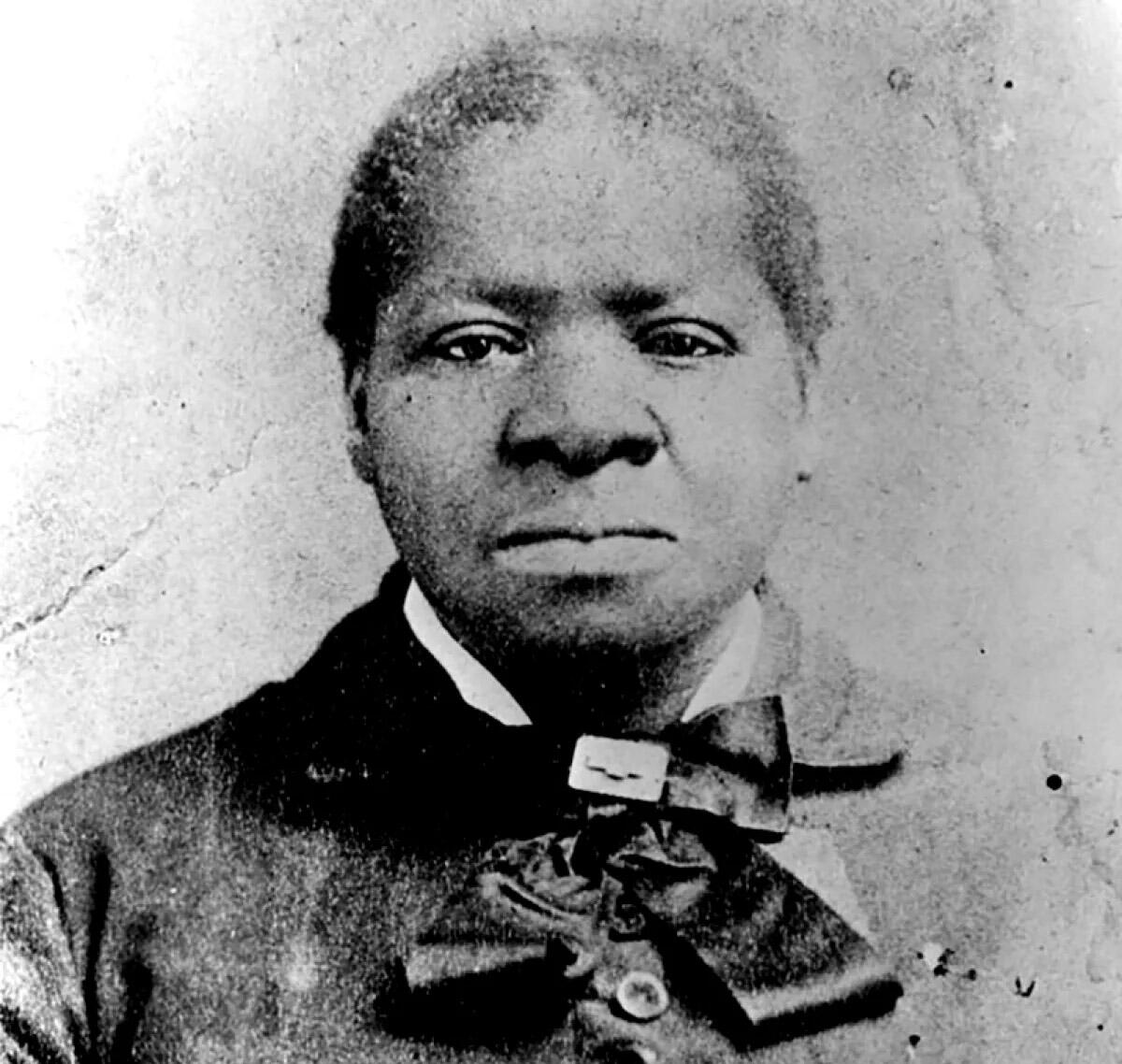
Biddy Mason
(Seaver Center for Western History Research)
“We understand that as a Black woman she has not received the ceremonial accolades that many founders and contributors to the city received,” said Robynn Cox. “So having something like a park that is historic and was around when she was alive and has been a central part of the city is a great step in the right direction for her receiving the recognition for what she has done.”
“We hope that if we rename the park after her, it will give her higher visibility,” said Cheryl Cox, “so that more people are intrigued to learn more about her and possibly bring her out of the shadows.”
De León is expected to make the announcement on Wednesday, which is Juneteenth, the federal holiday that marks the date in 1865 when Union soldiers informed the last enslaved people in Galveston, Texas, that they were free, marking the end of slavery.
Nick Griffin, executive director of Downtown Alliance, a coalition of more than 2,000 property owners, said the group was thrilled with the park’s anticipated name change.
“I think tapping into the powerful legacy [of] Biddy Mason is almost a perfect fit for the revitalization of a park that has also been to some extent forgotten over the years,” he said. “I think both the park and her legacy will benefit from a rediscovery.”
Few know of Mason’s story. She was born into slavery in the summer of 1818. At a young age, she moved to several states as she was sold and purchased by enslavers. She developed skills in agriculture, medicine and midwifery along the way.
At 18, she and her sister were sold to Robert Smith, a plantation owner in Logtown, Miss. In 1847, Smith converted to Mormonism and relocated his family to Utah to help establish a Mormon community. Mason walked more than 2,000 miles on foot behind a 300-wagon caravan for months, cooking and herding cattle while caring for the Smiths’ children as well as three of her own, including an infant.
In 1851, the Smiths relocated from Utah to San Bernardino. By then, California had been admitted to the Union, and slavery was illegal. Eventually, Mason fought for her freedom in court, with the judge ruling in her favor and that of other Smith’s other slaves
Her case was one of the first legal challenges in Los Angeles and set a precedent for others to petition for their freedom in California.
Mason then went to work as a nurse and midwife, saving $2.50 a day until she had enough to buy land between Broadway and Spring Street, where she built her home.
She continued to purchase real estate throughout the city. By 1878, Mason had become a wealthy landowner, eventually selling some of her properties for as much as 10 times their original price.
Her philanthropy grew alongside her wealth. She was known to pay the annual property taxes for local churches. She started First AME out of her home. She also built the first school and foster home for Black children. In 1884, when a storm caused the Los Angeles River to swell and sweep away homes, Mason paid a grocery store to give away free food to flood victims, regardless of color. She helped so many people that she was fondly referred to as Aunty or Grandma Mason.
Mason died in 1891 and was soon forgotten. Then in 1988, First AME placed a headstone on her unmarked grave at Evergreen Cemetery. The following year, the small memorial park downtown was erected in her honor.
But Cheryl and Robynn Cox said they had long tried to get a street renamed after their ancestor, with no luck.
Two years ago in February, while honoring Mason at the memorial park, they approached De León and his team with their request. They don’t recall when those conversations included renaming Pershing Square.
The timing of De León’s proposal comes as he is running for reelection and trying to move past a 2021 scandal that involved several members of the City Council and drew outrage from a wide array of political and civic leaders. De León took part in a secretly recorded conversation with two other council members and a high-level labor leader that featured, among other things, racist and derogatory remarks about then-Councilmember Mike Bonin, who is white, and Bonin’s son, who is Black. The audio was leaked a year later.
Faced with demands for his resignation, De León apologized on Tavis Smiley’s talk show, offering his “deepest, deepest apologies” to the Black community, both in L.A. and elsewhere. He said he should have spoken up or walked out of the room during that conversation.
De León’s office downplayed the timing of the councilman’s push to rename the park, saying he’s simply trying to do the right thing by honoring an important figure from Los Angeles history. Talks with the family about the honor predated the scandal, the office noted.

A rendering shows the redesigned Pershing Square after the third phase of work is complete.
(Courtesy of Agence Ter / Gruen Associates and L.A. Bureau of Engineering)
Cheryl Cox and her sister said they couldn’t speak to De León’s motives.
“We want to keep the focus just on our grandmother,” Robynn Cox said.
“We don’t condone what was said and what was not said,” Cheryl Cox said. “But it should not in any way disparage from our grandmother, nor her legacy, nor what the city should be doing for her.”
Cox noted “the blood sweat and tears” that her ancestor had expended on Los Angeles and said many had received recognition for doing less.
“We appreciate that a councilman was willing to create this opportunity,” she added.
On a recent afternoon, there were few visitors at Pershing Square. Amid the din of traffic, hissing buses and loud stereos, the playground sat empty, and men lay on the grassy strips, napping under the sun. Along the square’s pathways, homeless people took up what few shaded areas were available; some used drugs openly.
“It’s not very people-friendly. There’s no shade,” said Gayle Baigelman, 63, as she walked her gray pit bull, Hope. “And you can see who is usually drawn to this place.”
She said she’d heard about the park’s renovation and was looking forward to the transformation. She also approved of the proposed renaming.
“That’s definitely the right person to honor.”
Times staff writer David Zahniser contributed to this report.
World News
India Wins T20 Cricket World Cup, Stamping Its Domination of the Sport

India won the men’s Cricket World Cup on Saturday, defeating South Africa to end a dry spell in tournament victories that had lasted over a decade, even as the nation was dominating the sport globally in other measures like talent, cash and influence.
The tournament was played across several Caribbean islands, with a few of the matches hosted in the United States, including at a pop-up stadium in New York. When the final, in Barbados, ended with India declared the champion, it was close to midnight back home, where joyful crowds poured into the streets across several cities.
“Maybe in a couple hours it will sink in, but it is a great feeling,” said Rohit Sharma, India’s captain, who took a tour of the stadium with his daughter propped on his shoulders to thank the crowd. “To cross the line — it feels great for everyone.”
It was a closely fought match, and a deeply emotional one for India, in part because many of its senior players, including Sharma, 37, were near the end of their careers. India last won the World Cup in T20, the shortest format of cricket, in 2007, when Sharma was just getting started. The top prize had also evaded Virat Kohli, 35, one of cricket’s most recognized icons. Rahul Dravid, India’s coach, had never won a World Cup during his long and illustrious career as a player.
All three men ended the night on a happy note, with Sharma and Kohli announcing their retirement from the fast-paced short form of the game. Dravid, who finished his stint as India’s coach, is normally a quiet, stoic presence. But after the win, he was screaming and celebrating.
India’s president, Droupadi Murmu, and prime minister, Narendra Modi, both congratulated the team. “In the field, you won the World Cup. But in India’s villages, streets, and communities, you won the hearts of our compatriots,” Mr. Modi said in a video message.
Cricket, followed by hundreds of millions of people, is a crucial part of India’s global brand — perhaps even more important than the country’s film industry. The governing body of cricket in India has at times been accused of using its outsize economic heft to dictate terms around global cricket events, reflecting its status as the richest contributor and a destination for the world’s best players.
The start of the Indian Premier League in 2007 transformed a sport that was once seen as slow and short of cash. In just 17 years, the league’s brand value has surpassed $10 billion, making it among the richest sports leagues in the world. Players routinely earn contracts worth over $1 million for a season that lasts about eight weeks, with some of the highest-paid bagging close to $3 million.
Last year, India launched the I.P.L.’s sister league, the Women’s Premier League, with $500 million — an investment similar to the one that started the men’s league — and is already expanding opportunity for women in India and for talent from around the world. The league’s wealth has meant more investment at the grass roots to develop more players. Female players long in the shadow of the men’s game are now finding brand endorsements, more TV viewers and thousands showing up for their matches at stadiums.
And the foreign players in both the leagues — all with large followings at home — are a public relations boost for India as they travel around to play, using social media to post admiration for the culture of a vastly diverse country.
In India, a cricket-crazy nation that closely follows the players’ every move on and off the field, many of this generation of stars have been role models that could help the country move the needle on social issues, particularly about a public life that remains male-dominated.
Sharma, the captain, who is married to a sports management professional, and Kohli, who is married to an actor, often speak of the role of their partners in their careers. Sharma’s wife, Ritika Sajdeh, and their daughter are often at his side during tours, while Kohli is frequently seen video-calling his family from the stadium after matches.
“Our daughter’s biggest concern was if all the players had someone to hug them after she saw them crying on TV,” Anushka Sharma, Kohli’s wife, posted on social media after the win.
Jasprit Bumrah, who was named the World Cup’s most valuable player, found himself doing his post-award interview with his wife, the broadcaster Sanjana Ganesan. This was a working couple on tour. Behind them amid the celebrations was their 10-month-old baby being looked after in a stroller.
“Thank you so much for talking to us, Jasprit, and all the best for—” Ms. Ganesan began as she wrapped up the interview. But her husband went in for a hug before she finished speaking and then ran back to join his teammates in celebrating.
World News
Euro 2024: Spain v Georgia – Nico Williams’ remarkable journey to the top

Despite their new found security, life was far from easy for the Williams family. They moved 150 kilometres south east to Pamplona.
Nicholas Williams Arthuer was born there on July 12, 2002, but unable to find enough work to keep his family, Felix moved to London doing whatever he could to send money home.
He cleared tables in a food hall in a Chelsea shopping centre and worked as a security guard, even on the turnstiles at Chelsea FC.
He was away for 10 years – he is back in Bilbao now – during which time Inaki became like a father to Nico, while their mother worked up to three jobs at a time in her efforts to provide for her family.
When they go for lunch at their mum’s, she reminds them to clear the table, wash the dishes, and tells them off if they step out of line. The education from their parents is constant.
Inaki, who decided to play for Ghana as a homage to them, would watch over Nico all the way.
From picking him up from school and giving him a ‘bocadillo’ (sandwich) when they come out of class, to later instructing him in the behaviour that he needed to follow if he wanted to make it as an elite athlete.
“For me he is a reference, he is everything for me,” said Nico. “He has helped my parents and me so that we can eat, so that I could go to class, so that I could get dressed.
“He corrects me, he advises me, he has always done it actually, but we get along very well. He is my brother, but he also acts as a father a little.”
On 28 April 2021, the brothers were brought on as second-half substitutes in Athletic’s 2-2 draw at home against Real Valladolid to become the first siblings to play for the club together since 1986.
After the final, they immediately went to visit their mum, who was unable to watch the match as fans were banned from the stadium because of the Covid pandemic.
World News
Ventura Pier reopens after a year-and-a-half closure caused by storm damage

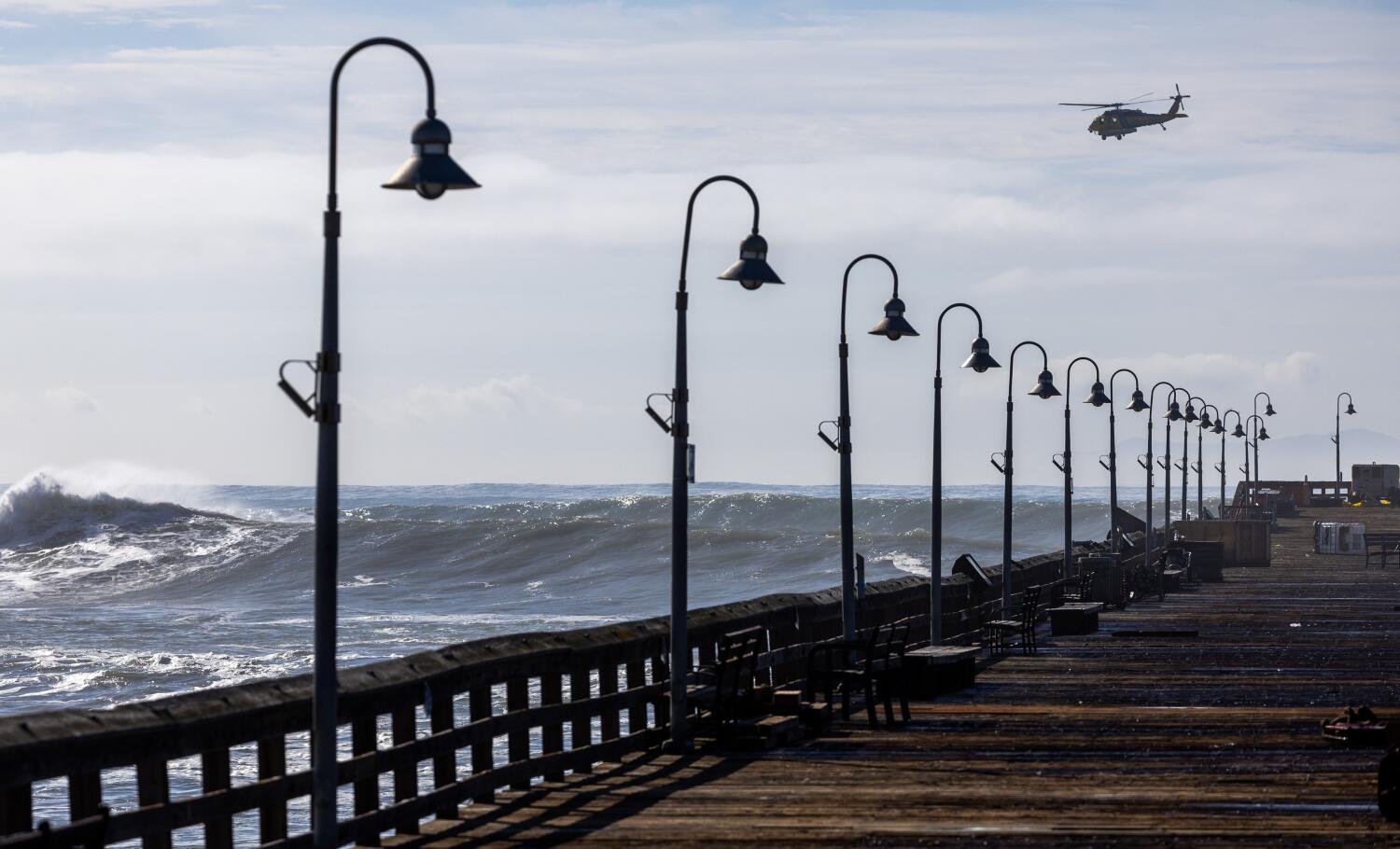
Ventura’s famous pier reopened Saturday after massive waves damaged the landmark last year.
Social media posts and news video footage showed people striding onto the pier early Saturday, carrying fishing poles, coolers and folding chairs. The pier — the oldest in California — is a popular fishing and sight-seeing spot and draws tourists, families and lovebirds.
“The Ventura Pier is open!” the city of Ventura announced on its X feed.
High surf from a winter storm pummeled the boardwalk in January 2023. In December, another storm swept through, causing more damage to the pier’s piles and braces.
Mary Joyce Ivers, deputy public works director in Ventura, told KTLA that the city had to replace 37 timber piles, which hold up the deck of the pier, as well as 100 pieces of hardware and cross-bracing and 3,000 square feet of deck board.
“It’s such an important piece of our city,” Ivers told KTLA. “It’s such a great landmark and so many great things happen on this pier for families and our community.”
The repairs cost at least $3.3 million, with the federal government and the state expected to pick up the tab, according to a city news release.
The pier, first built in 1872 as a private commercial wharf, has been repaired or rebuilt countless times throughout its history. It closed in 1992 for 13 months after it was clobbered by waves and reopened after a $3.5-million restoration.
More recently, it closed in 2015 for several months for repairs after another storm.
Ventura purchased the pier for $7,000 in 1940 but gave it to the state in 1949.
In 1990, the city moved to take it back after state officials said they were considering demolishing the structure because of the high maintenance costs.
-

 African History5 years ago
African History5 years agoA Closer Look: Afro-Mexicans 🇲🇽
-

 African History5 months ago
African History5 months agoBlack History Facts I had to Learn on My Own pt.6 📜
-

 African History5 years ago
African History5 years agoA Closer Look: Afro-Mexicans 🇲🇽
-

 African History1 year ago
African History1 year agoMajor African Tribes taken away during the Atlantic Slave Trade🌍 #slavetrade #africanamericanhistory
-

 African History1 year ago
African History1 year agoPROOF AFRICAN AMERICANS AIN'T FROM AFRICA DOCUMENTED EVIDENCE
-

 African History1 year ago
African History1 year agoCameroon 🇨🇲 World Cup History (1962-2022) #football #realmadrid #shorts
-

 African History5 months ago
African History5 months agoBlack History Inventors: Mary Kenner 🩸
-

 African History4 months ago
African History4 months agoMr Incredible Becoming Canny/Uncanny Mapping (You live in Paraguay 🇵🇾)




